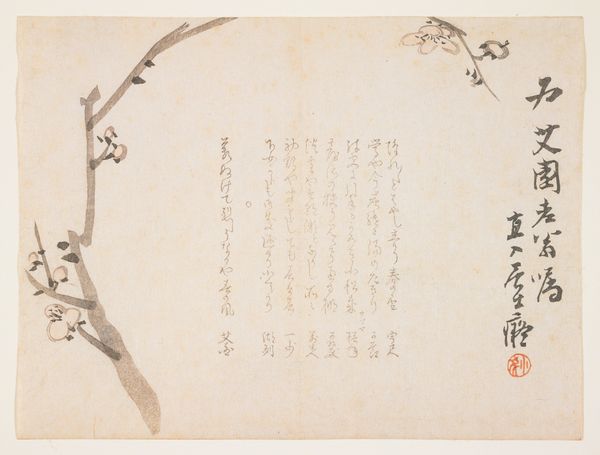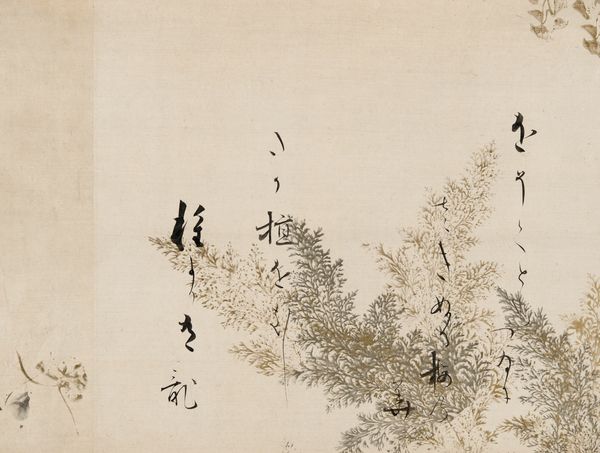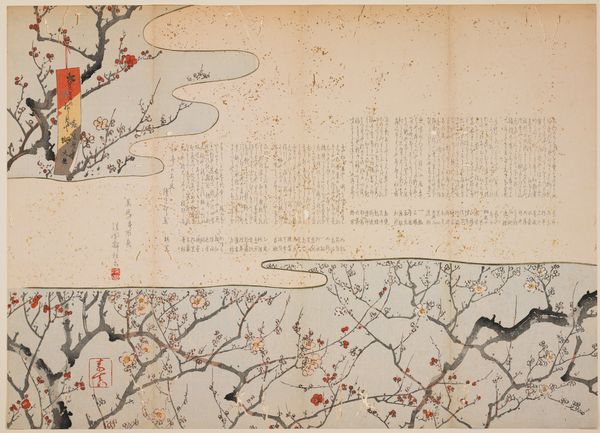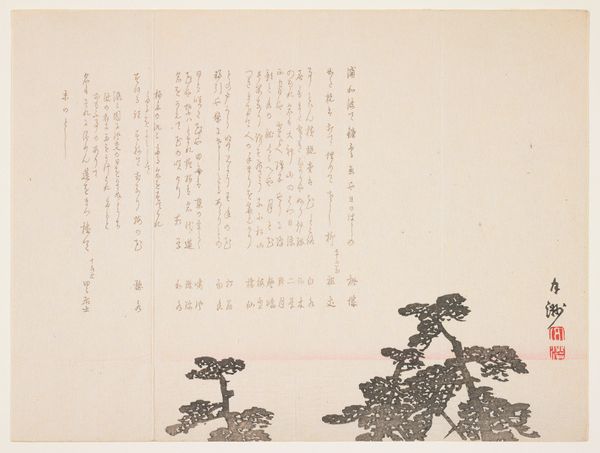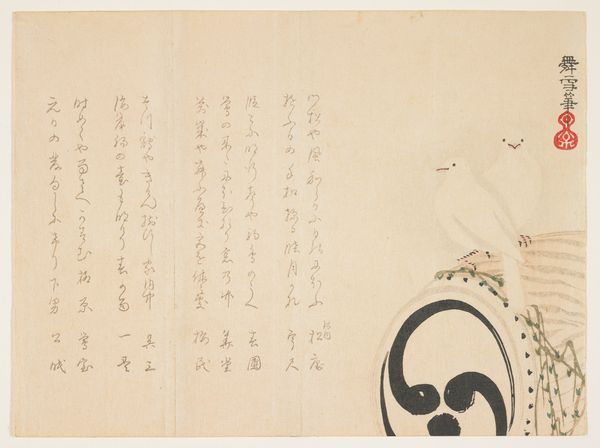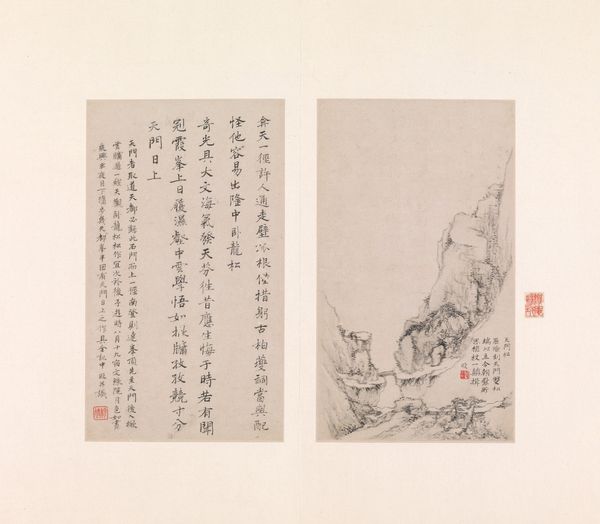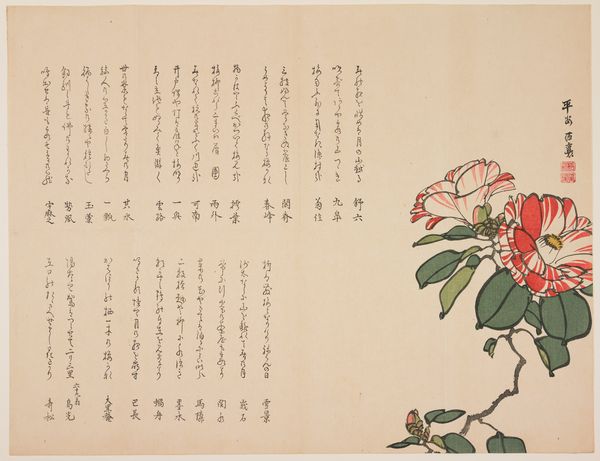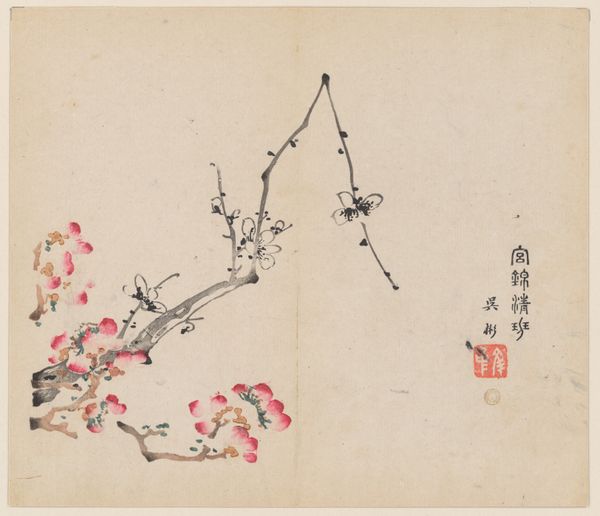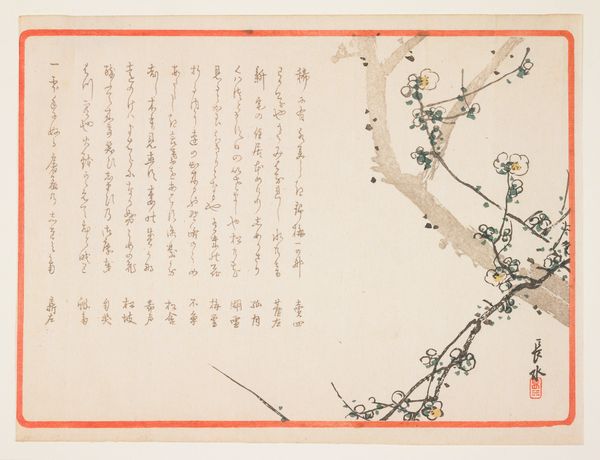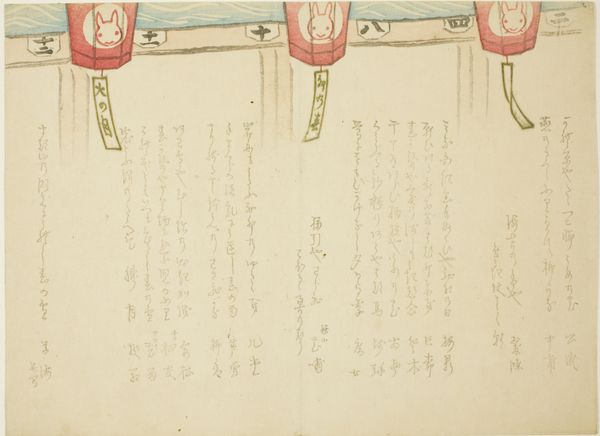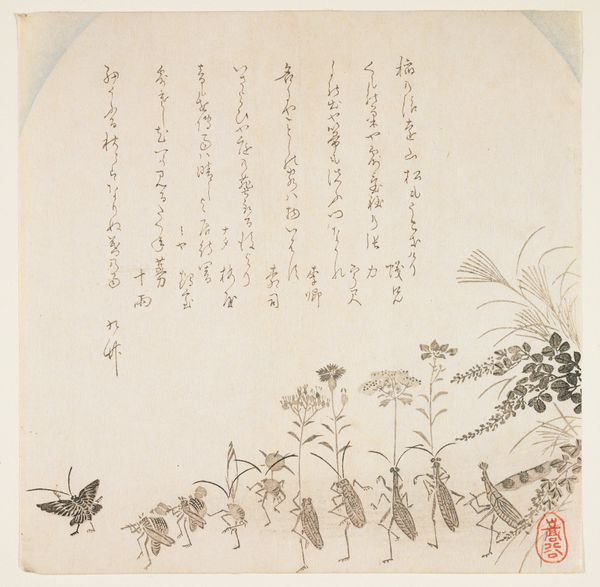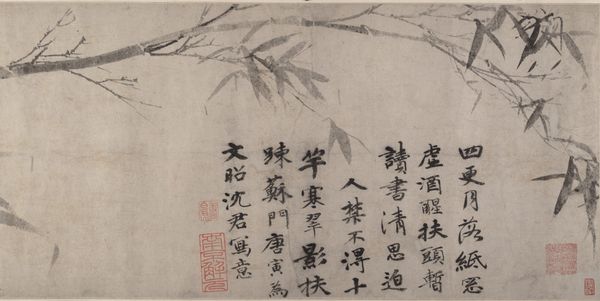
print, ink, color-on-paper
# print
#
hand drawn type
#
etching
#
japan
#
personal sketchbook
#
ink
#
color-on-paper
#
ink drawing experimentation
#
botanical drawing
#
pen work
#
watercolour bleed
#
watercolour illustration
#
botanical art
#
watercolor
Dimensions: 15 x 19 1/4 in. (38.1 x 48.9 cm) (image, sheet)
Copyright: Public Domain
Sensō’s “Plum Blossoms” is a delicate work on paper, using ink and color. A seemingly simple image of nature, the materials themselves carry a weighty cultural and social significance. The paper, likely handmade, signals a connection to traditional craft practices, a slower pace of production that values the labor involved in creating the support for the artwork. The ink, too, is not merely a vehicle for the image. The way it bleeds and flows on the paper determines the ethereal quality of the blossoms, indicative of a mastery over material. Note the script surrounding the image, a collaborative list of names of people who patronized the work, suggesting a network of relationships supporting the artist. In this light, "Plum Blossoms" challenges our conventional ideas of art and craft. It invites us to consider not only the final image, but also the means by which it was brought into being. It is a testament to the value of skilled labor, slow production, and the social connections that bind art and life.
Comments
minneapolisinstituteofart almost 2 years ago
⋮
Sixty poems that celebrate the coming of spring are accompanied by an illustration of a blooming plum tree. A thatched farm house is partially obscured by the profusion of red flowers. The low mountain range in the background also contributes to the pastoral atmosphere. One of the poets who contributed a verse was also the designer of the print. It was not uncommon that designers of surimono were also members of poetry societies that commissioned the prints. This rather simple design is accentuated by a sophisticated technique called kiri-haku (cut foil). Tiny pieces of cut silver leaf were applied over the tree. These small shiny pieces (although darkened by oxidation today) may have been intended to represent the glittering sunlight of spring.
Join the conversation
Join millions of artists and users on Artera today and experience the ultimate creative platform.
